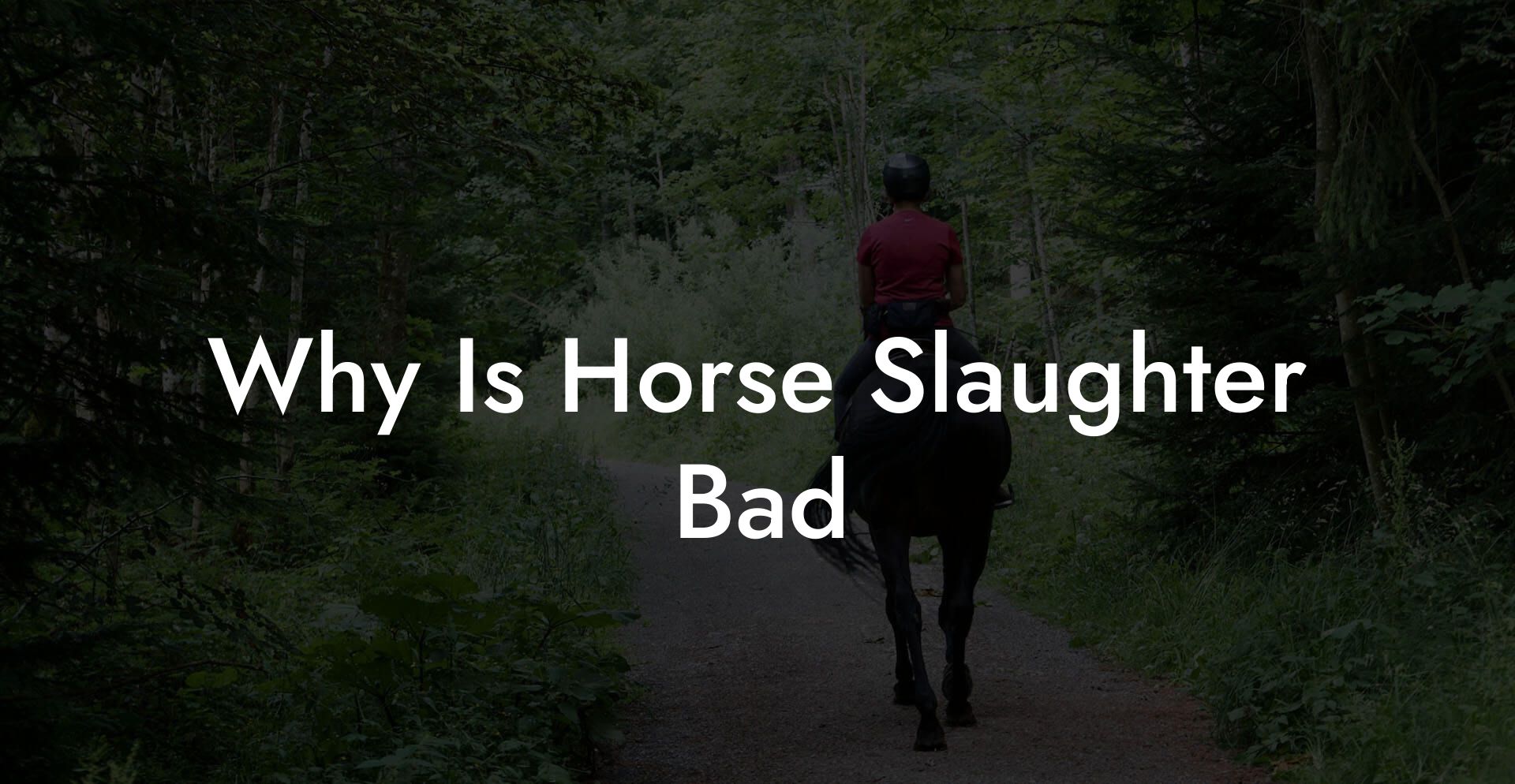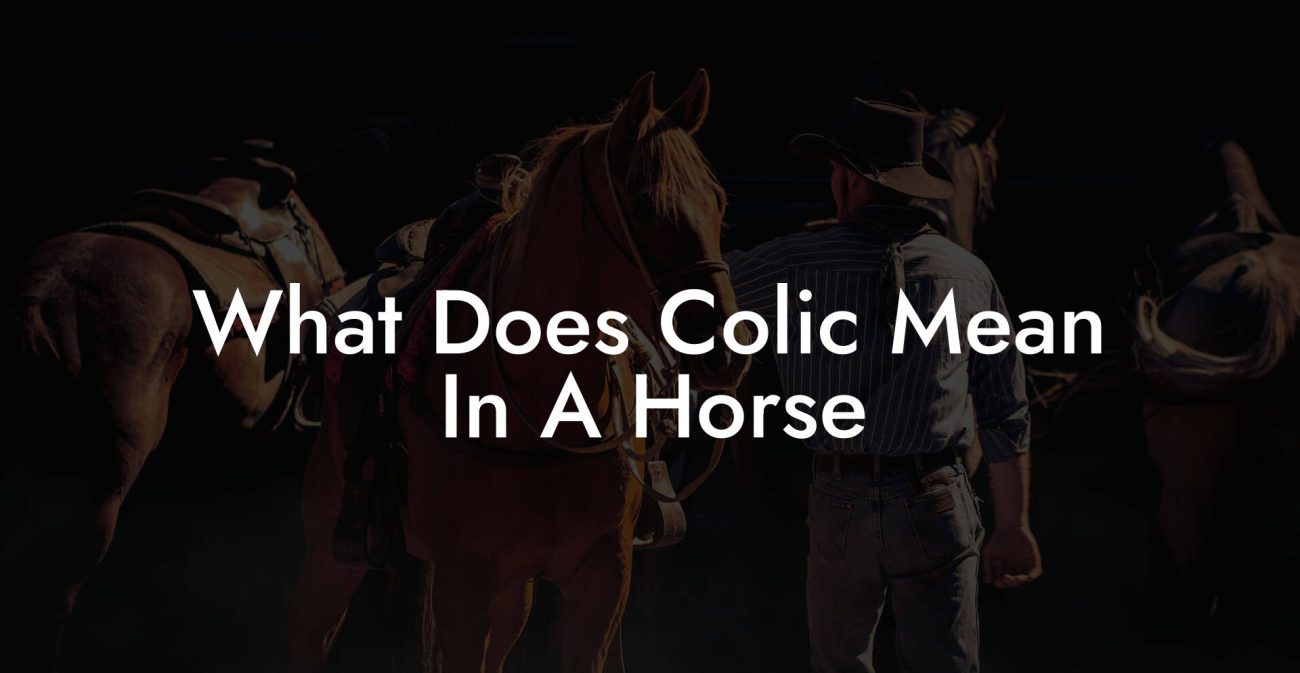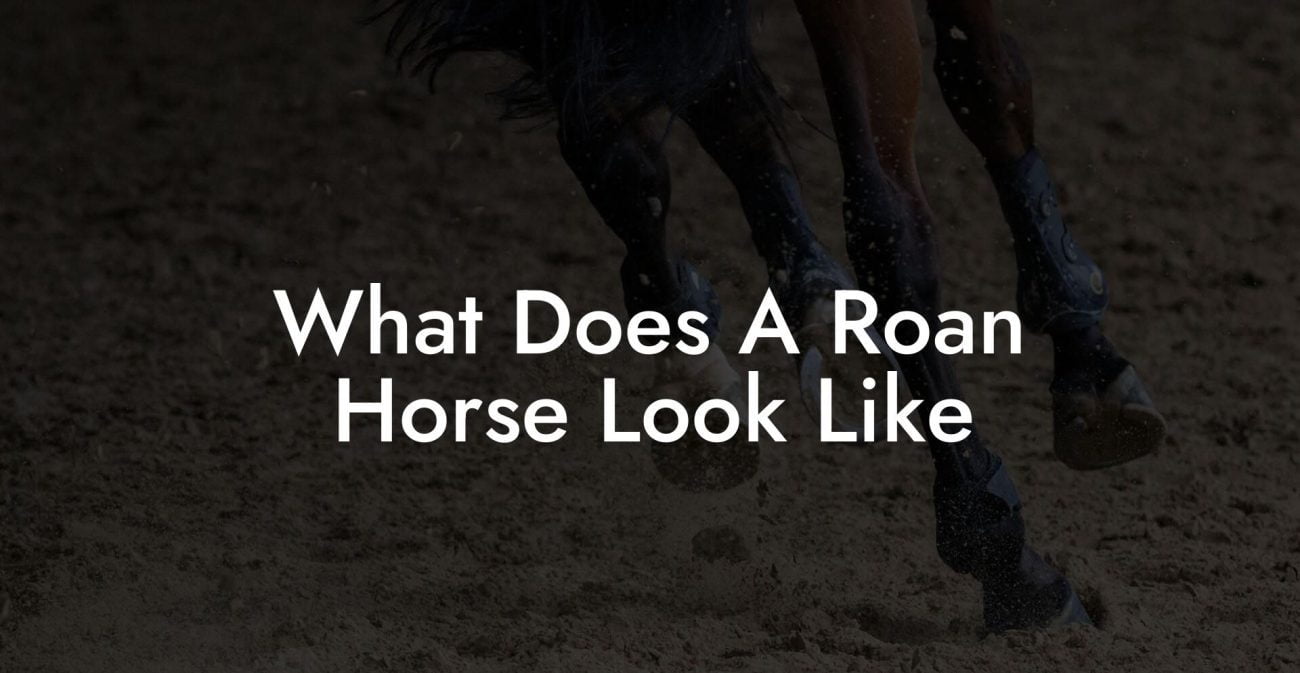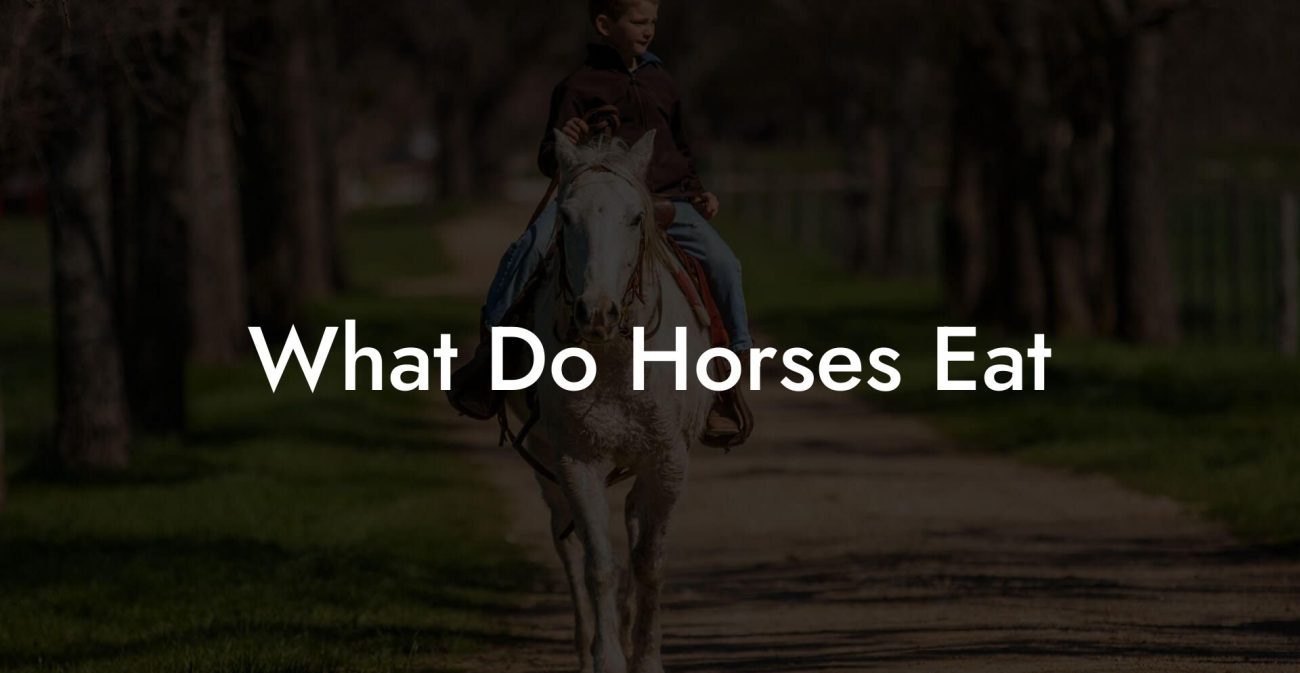In a world where animal welfare and ethical treatment are taking center stage, few topics spark as much passion and debate as horse slaughter. This isn’t just about another livestock practice, it’s about our shared responsibility to protect the majestic beings that have carried us through centuries of history, companionship, and culture. Whether you’re an equestrian enthusiast, an animal rights advocate, or someone curious about the ethics of modern farming and end-of-life care, this deep dive will take you on a roller coaster of insights, hard truths, and exploring paths toward a kinder future. Grab your virtual saddle and let’s get real about why horse slaughter is bad.
Quick Links to Useful Sections
- The Historical and Cultural Context of Horse Slaughter
- Understanding Horse Slaughter: What Does It Entail?
- Ethical Considerations: Why Horse Slaughter Is Controversial
- Animal Welfare Impact: The Toll on Equine Lives
- Cultural and Emotional Resonance: Beyond Economics and Efficiency
- The Environmental and Social Implications of Horse Slaughter
- Economic Considerations: Profit Versus Compassion
- Legal and Regulatory Frameworks: Are They Doing Enough?
- Alternative Approaches: Rehoming, Sanctuaries, and Ethical Euthanasia
- Public Opinion and Activism: The Rise of a New Generation of Advocates
- Challenges in Implementing Humane Equine Care
- Technology and Innovation in Equine Care
- Stakeholder Perspectives: Voices from the Field
- Resources and Community Support: Your Next Steps
- Charting a Compassionate Path Forward: Rethinking Equine End-of-Life Care
- Frequently Asked Questions About Horse Slaughter
- Your Journey to Compassionate Equine Care
The Historical and Cultural Context of Horse Slaughter
To understand why horse slaughter is such a polarizing topic, we need to saddle up and take a look back at history. Horses have been our partners in exploration, warfare, transportation, and sport for millennia. From chariots in ancient battles to the modern-day thrill of equestrian sports, horses hold a revered place in human society. Their beauty, strength, and intelligence have inspired art, poetry, and entire cultures.
In many parts of the world, horses are seen not merely as animals but as symbols of freedom, resilience, and nobility. This historical bond amplifies the emotions and ethical considerations tied to practices like horse slaughter. For many, the thought of slaughtering an animal so integral to our collective identity is more than just a matter of food production or resource management, it strikes at the heart of our cultural legacy and moral duty.
At the crossroads of history and modernity, discussions about horse slaughter often reflect broader concerns about the exploitation of animals for profit, the erosion of animal welfare standards, and the conflict between traditional practices and contemporary ethical standards. In today's digital age, where every action is scrutinized under the microscope of social media and public opinion, the practice of horse slaughter has increasingly become a flashpoint for debates about compassion, sustainability, and the future direction of animal husbandry.
Understanding Horse Slaughter: What Does It Entail?
Horse slaughter typically refers to the process of killing horses for meat and other by-products. Proponents of the practice often argue that it provides a necessary economic outlet, helps manage overpopulation, and supplies a source of protein in some cultures. However, the methods and conditions involved in horse slaughter have raised serious concerns among animal rights advocates, veterinarians, and the general public.
In many cases, horse slaughter involves transporting horses over long distances and subjecting them to stressful, inhumane conditions just before they’re dispatched. Unlike the strictly regulated protocols in place for livestock like cattle or pigs in some regions, the oversight for equine processing can be inconsistent. The lack of standardized humane handling practices often culminates in physical stress, injuries, and even casualties before the actual point of slaughter.
Moreover, the process sometimes involves methods that can be horrifyingly inhumane. The absence of stringent regulations and a clear mandate for humane practices in many horse slaughter facilities has led to widespread reports of animal cruelty. This not only affects the horses but also tarnishes the reputation of industries and communities involved in the practice, further fueling calls for reform.
Ethical Considerations: Why Horse Slaughter Is Controversial
The very notion of ending a horse’s life for profit raises countless ethical dilemmas. For many, horses are more than just animals, they are comrades, working partners, and cherished companions. This deep emotional connection makes the idea of slaughter seem like a betrayal of trust and respect.
One of the key ethical arguments against horse slaughter is that it often violates the principle of animal rights. Many activists and thinkers argue that animals with complex emotional and cognitive capacities deserve protection from harm and exploitation. Horses, with their social bonds, capacity for emotion, and historical significance, fit squarely into this category.
Furthermore, the conditions under which many horses are shipped and held prior to slaughter often escape the notice of strict regulatory oversight. Videos and firsthand accounts from whistleblowers have shed light on brutal handling, lack of access to water, inadequate food, and prolonged confinement, all of which compound the ethical concerns in the practice.
The issue also extends to the notion of “utilitarian ethics” versus “rights-based ethics.” While proponents might argue that utilizing horses for meat reduces waste and contributes to a circular economy, critics counter that the suffering inflicted on sentient beings far outweighs any potential benefits. As the conversation evolves, the ethical arguments increasingly favor alternatives that prioritize animal welfare and dignity over profit.
Animal Welfare Impact: The Toll on Equine Lives
When we talk about the toll of horse slaughter, it’s impossible to ignore the profound impact on the animals themselves. Horses are known for their highly social and sensitive nature, and the ordeal of being transported and killed in inhumane conditions can result in extreme stress and trauma.
Scientific studies have linked high-stress environments to a weakened immune system, decreased life expectancy, and long-term behavioral issues in horses. The slaughter process, which often involves overcrowded transport conditions, extreme temperatures, and insufficient rest, creates a scenario where the horses endure a physical and emotional ordeal that is hard to fathom.
Moreover, even if the methods of slaughter were improved slightly, the very act of ending a sentient being's life in a high-stress setting poses serious welfare concerns. Activists and veterinarians argue that if society values compassion and animal rights, then no animal, especially one as noble as the horse, should be subjected to these conditions.
For those who advocate for more humane treatment, the focus shifts toward alternative end-of-life care. This can include retirement to sanctuaries, where horses can live out their remaining years in peace, or innovative programs that rehome retired equine athletes and workers. The overarching goal is to ensure that horses receive the care and dignity they deserve in every stage of life.
Cultural and Emotional Resonance: Beyond Economics and Efficiency
Horses have an almost mythical status in many cultures. They represent freedom, strength, and the wild spirit of nature. For centuries, their images have been immortalized in art, literature, and folklore. When these creatures, so intertwined with our collective identity, are subjected to practices that many deem cruel, the backlash is not just economic, it’s deeply cultural and emotional.
Many communities, particularly in regions with a strong equestrian heritage, view horse slaughter as a betrayal of tradition and honor. The sight of a horse being led to slaughter can evoke visceral emotional responses, from anger to profound sadness. This response is amplified within the spheres of social media and digital advocacy, where viral images and impassioned testimonials drive movements demanding legislative reform.
The power of storytelling and shared cultural experiences means that the conversation around horse slaughter is not confined to boardrooms or farms, it resonates across the globe. The voices of millennial activists and Gen-Z advocates are reshaping the narrative, emphasizing compassion over convention and urging society to question whether profit should come at the expense of noble animal lives.
In this light, the issue transcends the pragmatic concerns of animal management or meat production; it becomes a matter of cultural identity and ethical evolution. As society progresses, so does our understanding of what it means to treat living beings with respect and dignity.
The Environmental and Social Implications of Horse Slaughter
While the ethical and animal welfare dimensions are crucial, there is another layer to the issue: the environmental and social impact. Modern industrial practices, including those that involve animal slaughter, contribute to a host of environmental problems, from pollution to unsustainable resource use.
The transportation and processing of horses for slaughter consume a significant amount of energy and often result in environmental degradation. The disposal of animal by-products, if not managed correctly, can lead to soil and water contamination, affecting local ecosystems and communities. This adds a critical environmental argument to the case against horse slaughter: the need to adopt sustainable practices that minimize harm to our planet.
Socially, the practices associated with horse slaughter can create tension within communities. Rural economies that rely on traditional farming and animal husbandry may find themselves at odds with urban animal rights groups who advocate for stricter welfare standards. This clash of values can deepen societal divides, prompting debates about the role of tradition versus modern ethical standards.
Furthermore, public perception plays a huge role. In an age where environmental sustainability and ethical consumption are key concerns for younger generations, the association with practices considered outdated or cruel can have lasting reputational impacts on industries and businesses involved in horse slaughter. This has spurred some stakeholders to seek alternatives that align better with modern sustainability and animal rights priorities.
Economic Considerations: Profit Versus Compassion
No discussion of horse slaughter would be complete without addressing the economic factors at play. In some parts of the world, the horse slaughter industry is seen as an economic necessity, a means to manage surplus populations and supply parts of the meat market. Proponents argue that it provides jobs and economic relief in struggling rural areas.
However, this viewpoint often clashes with emerging consumer attitudes. As more people become aware of the ethical implications and environmental costs associated with horse slaughter, there is growing resistance to supporting industries grounded in practices that many now view as inhumane. This shift is particularly notable among Gen-Z and millennial consumers, whose purchasing choices are increasingly guided by values, ethics, and sustainability.
The market dynamics are slowly changing. With rising interest in plant-based alternatives, ethical meat sources, and reverse innovation in animal care, there is a burgeoning opportunity for industries to pivot away from practices like horse slaughter. By investing in humane treatment programs, equine retirement sanctuaries, or alternative revenue streams that respect animal life, stakeholders can address economic challenges without compromising on compassion.
Balancing profit and compassion isn’t just an ethical dilemma, it’s a market reality. Forward-thinking industries are recognizing that long-term sustainability can only be achieved when economic practices also support the well-being of animals, the environment, and the communities that depend on them.
Legal and Regulatory Frameworks: Are They Doing Enough?
One of the most contentious issues surrounding horse slaughter is the adequacy of legal and regulatory frameworks designed to protect animals. In many nations, animal welfare laws are still catching up with modern ethical standards, and horse slaughter often falls into a regulatory gray area. While some countries have instituted strict guidelines for humane slaughter, enforcement can be inconsistent or nonexistent.
Critics argue that current regulations fail to address the unique needs and sensitivities of horses. For instance, loopholes in transport and handling laws often allow for overcrowded conditions that place horses under undue stress long before they reach a processing facility. The problem is compounded by a lack of transparency and accountability in many slaughter operations, where inspections and oversight are sporadic at best.
Reform advocates call for stricter animal welfare standards that specifically address the treatment of horses. This means better training for handlers, improved transport conditions, and a clear mandate to prioritize humane end-of-life care. Moreover, there is a growing push for comprehensive legislation that not only regulates the industry but also incentivizes alternatives to slaughter, such as sanctuary care and rehoming programs.
Until these legal frameworks are strengthened and uniformly enforced, the debate over horse slaughter will likely continue to be a flashpoint for broader discussions about how we define and protect animal rights in a modern society.
Alternative Approaches: Rehoming, Sanctuaries, and Ethical Euthanasia
With increasing awareness and public outcry over the ethical and environmental issues inherent in horse slaughter, alternative approaches to managing the end-of-life care of horses are gaining traction. For those who love horses and wish to see them treated with the dignity they deserve, these alternatives represent a hopeful path forward.
One of the most promising alternatives is the development of horse sanctuaries. These sanctuaries provide a safe haven where retired, injured, or surplus horses can live out their golden years in comfort and care. Many sanctuaries are run by compassionate individuals and organizations that prioritize rehabilitation, rehabilitation, and high standards of veterinary care. They work to educate the public, foster community involvement, and advocate for policy reform to support non-lethal end-of-life solutions.
Another alternative is ethical euthanasia, a process that, while still ending a life, is conducted under strict guidelines to ensure the least amount of suffering possible. This approach, reserved for cases where a horse is terminally ill or suffering unbearably, is carried out with deep empathy and in accordance with veterinary protocols. It is considered a last resort, reflecting a commitment to reducing overall harm rather than an endorsement of slaughters as a routine practice.
There is also a growing movement toward rehoming programs. Non-profit organizations and rescue groups actively work to find loving homes for horses that might otherwise face slaughter. These programs not only provide a better quality of life for the horses but also educate the public about responsible equine care and ethical treatment. Social media campaigns, crowdfunding, and community events have become powerful tools in rallying support for these initiatives, particularly among younger, socially conscious demographics.
Such alternatives underline a critical point: that humane, sustainable, and ethical choices are available. They challenge the notion that economic necessity must come at the expense of compassion, inviting us to reimagine how we value and care for the lives of these incredible animals.
Public Opinion and Activism: The Rise of a New Generation of Advocates
In recent years, public opinion on horse slaughter has shifted dramatically, largely driven by the activism of Gen-Z and millennial communities. These groups are harnessing the power of social media to expose inhumane practices, mobilize support, and demand legislative change. Hashtags, viral videos, and online petitions have transformed horse welfare from a niche issue into a resonant global movement.
This digital activism brings a fresh perspective to the debate. Activists are not only highlighting the cruelty associated with horse slaughter but are also offering concrete solutions and alternatives. They call for improved transparency in the industry, stricter regulations and oversight, and a commitment to compassionate care. Their efforts have led to increased public scrutiny, with many consumers now factoring ethical considerations into their purchasing decisions and lifestyle choices.
Public forums, online communities, and advocacy groups are playing a pivotal role in shaping policy and public attitudes. The voices of these young activists are challenging entrenched industry practices and pushing for reforms that reflect modern values of empathy and sustainability. Their passionate engagement underscores a broader trend: as societal values evolve, so too must the policies and practices that govern our treatment of animals.
The energy of this movement is infectious. It is a call to action for everyone, horse owners, farmers, legislators, and consumers, to rethink our relationship with horses. By elevating the conversation and demanding accountability, this wave of activism is setting the stage for a future where every horse is treated with the respect and care it deserves.
Challenges in Implementing Humane Equine Care
Despite growing consensus on the need for alternatives to horse slaughter, implementing truly humane equine care practices presents a host of challenges. Economic realities, entrenched industry habits, and a lack of comprehensive policies often create significant hurdles. Changing the status quo requires not only a shift in mindset but also sustained investment in infrastructure and community education.
One major hurdle is the financial burden associated with establishing and maintaining sanctuaries, rehoming programs, and ethical euthanasia protocols. Many horse owners and small-scale caretakers operate on limited budgets, and the costs of providing long-term care can be daunting. Additionally, existing facilities may lack the resources or expertise to implement best practices in animal welfare.
Another challenge lies in the fragmented nature of regulations across different regions and countries. In many places, inconsistent standards create gaps that unscrupulous operators can exploit. This fragmentation undermines efforts to enforce humane treatment and makes it difficult for advocacy groups to rally for comprehensive reforms.
Education also plays a critical role. For sustainable change, horse owners, caretakers, and industry stakeholders must be equipped with the knowledge and tools necessary to implement alternative practices. Workshops, online courses, and community-driven initiatives can help disseminate best practices and foster a culture of compassion and accountability.
Despite these challenges, the momentum for change is undeniable. Collaborative efforts between animal welfare organizations, government bodies, and community groups are beginning to break down these barriers. The journey toward fully humane equine care is complex and ongoing, but each step forward represents a triumph for both horses and the values we cherish.
Technology and Innovation in Equine Care
When it comes to revolutionizing horse care, technology is emerging as a surprisingly powerful ally. From advanced veterinary diagnostics to digital platforms that facilitate rehoming and foster community support, innovation is broadening our capability to care for horses compassionately.
Modern veterinary medicine now leverages high-tech tools such as thermal imaging, advanced blood testing, and remote monitoring systems to more accurately diagnose and treat equine health issues. This means that many conditions that once led to premature decisions, including slaughter, can now be managed with timely intervention.
Digital platforms and social media are also transforming how communities mobilize around horse welfare. Online forums, crowdfunding initiatives, and mobile apps help connect those in need of horse care with resources, expertise, or potential adopters. These tools not only facilitate immediate assistance but also foster long-term networks of support and education.
Innovations in data-driven decision-making have the potential to reshape the regulatory landscape as well. By analyzing trends, monitoring welfare outcomes, and providing real-time feedback on animal health, technology makes a compelling case for rethinking practices such as horse slaughter. It helps build a transparent, accountable system where every horse’s life is valued and every decision is informed by evidence.
The collaborative spirit of modern tech communities, combined with a shared passion for animal welfare, is paving the way for transformative change. As technology continues to evolve, it brings us closer than ever to a future where humane equine care is not only possible but the standard.
Stakeholder Perspectives: Voices from the Field
To truly understand the depth and complexity of the horse slaughter debate, we must listen to the diverse voices of those directly involved. Veterinarians, horse owners, animal rights advocates, and industry insiders each offer unique perspectives on the practice and its alternatives.
Veterinarians on the front lines often express deep concern over the physical and psychological toll that the current practices take on horses. Many share firsthand stories of horses suffering from injuries, severe stress, and systemic health issues during transport and handling. Their insights underscore the urgent need for standardized humane protocols and alternatives that prioritize well-being.
Horse owners and trainers, many of whom form lifelong emotional bonds with their animals, often describe the experience as heartbreak-inducing. They emphasize that the value of a horse extends well beyond its economic worth; these animals are friends, confidants, and a link to history and tradition. For them, the thought of slaughter is not just a business decision, it’s a moral crisis.
Animal rights advocates bring passionate arguments to the debate, drawing on philosophical, ethical, and empirical evidence to champion the cause of compassionate equine care. They mobilize communities with powerful social media campaigns and organize protests, legal challenges, and public awareness drives to push for sweeping reforms.
Even within the industry, there are voices calling for change. Progressive stakeholders are beginning to explore how alternative revenue streams, such as equine therapy programs, agritourism, and adoption initiatives, can provide sustainable financial benefits without compromising on ethical standards. These emerging perspectives reflect a shift toward a more humane and holistic approach to animal management that aligns with modern values.
The mosaic of stakeholder perspectives paints a complex picture, one where economic imperatives, ethical obligations, cultural heritage, and practical challenges intersect. What remains clear is that the current practices around horse slaughter are unsustainable, and that a collective, compassionate response is needed to move forward.
Resources and Community Support: Your Next Steps
If you’re looking to make a difference, educate yourself further, or connect with a community of like-minded individuals passionate about equine care, there are plenty of resources and avenues to explore. Whether you’re an animal rights advocate, a horse owner, or simply someone concerned about ethical practices, here are some actionable next steps:
- Local Equine Sanctuaries and Rescue Organizations: Find and support sanctuaries in your area that provide sanctuary care for retired, rescued, or surplus horses. Many of these organizations rely on community support and donations, and they often welcome volunteers eager to lend a hand.
- Educational Webinars and Workshops: Look for online seminars and local workshops that offer training in humane equine care, alternative end-of-life practices, and legal rights pertaining to animal welfare. Knowledge is power, and staying informed is the first step toward meaningful activism.
- Advocacy and Activism Networks: Joining online communities or local groups dedicated to animal rights can help amplify your voice. Social media platforms, forums, and nonprofit organizations provide spaces to exchange ideas, organize events, and collectively campaign for change.
- Supporting Ethical Businesses: As consumer choices evolve, support companies and equine care providers that adhere to high ethical standards. This not only helps build a market where compassion is the norm but also pressures others to follow suit.
- Stay Updated on Policy Developments: Follow local and national legislation related to animal welfare. Engage with your elected representatives and advocate for tighter regulations and better enforcement to protect horses and other animals.
These resources are not just a starting point, they’re a gateway to a vibrant community united by the belief that every horse deserves a life filled with dignity, respect, and compassionate care. By taking these steps, you become part of a global movement dedicated to creating a kinder world for our equine companions.
Charting a Compassionate Path Forward: Rethinking Equine End-of-Life Care
As our exploration of horse slaughter draws to a close, one thing remains abundantly clear: we stand at a crossroads. The choices we make in how we care for horses, especially when it comes to end-of-life management, speak volumes about our values as a society. Is it acceptable to prioritize profit over compassion, or can we innovate, adapt, and choose a path that honors our deep, historical bond with these incredible animals?
The future of equine care lies in reimagining what it means to live, and die, with dignity. This means embracing alternatives to slaughter that offer humane, thoughtful solutions. It calls for policies that protect horses and prioritize sanctuaries, rehoming initiatives, and, when absolutely necessary, ethical euthanasia performed under strict guidelines. It means channeling the powerful activism of younger generations into concrete changes that ripple across communities and industries.
For many, the idea of transforming entrenched practices is daunting. Yet, when we look at the myriad of success stories emerging from equine sanctuaries, innovative rehoming programs, and progressive legislative reforms, hope shines through. Each initiative is a testament to the fact that change is possible when compassion leads the way.
Now is the time for each of us, whether you're directly involved in the equine world or simply an advocate for animal welfare, to ask the tough questions about our responsibilities. Reflect on what it truly means to care for these magnificent beings, and consider how your actions, voice, and choices can contribute to a future where every horse is treated with the empathy and respect it deserves.
The journey toward a more humane way of caring for horses may be long and fraught with challenges, but every small step counts. From engaging with local communities to influencing national policy, the collective power of informed, compassionate individuals has the potential to rewrite the narrative of equine care for generations to come.
So, whether you're on a horse farm, volunteering at a sanctuary, or simply scrolling through social media, remember that each action matters. Embrace the challenge, spread awareness, and be an advocate for those who cannot speak for themselves. The future of equine welfare is in our hands, let's choose kindness, transparency, and lasting change.
Frequently Asked Questions About Horse Slaughter
Below are answers to some of the most commonly asked questions regarding horse slaughter, its implications, and alternatives. These FAQs are designed to offer clarity and actionable insights into this complex issue.
1. What is horse slaughter?
Horse slaughter refers to the process of killing horses for meat or other by-products. It often involves prolonged transport, stressful handling, and inconsistent humane practices, which can lead to significant animal welfare concerns.
2. Why is horse slaughter considered controversial?
The controversy stems from ethical, cultural, and welfare concerns. Horses have a deep cultural significance and are known for their sensitivity and social nature. Inhumane handling and slaughter methods raise serious questions about animal cruelty and the moral responsibilities of society.
3. What are the main animal welfare issues associated with horse slaughter?
Key issues include excessive stress during transport, inhumane handling before slaughter, physical injuries, and a general lack of standardized protocols to ensure a humane death. These factors contribute to prolonged suffering and raise significant ethical concerns.
4. Are there any legal regulations governing horse slaughter?
Legal frameworks vary significantly around the world. In many regions, regulations are either lax or poorly enforced, leading to widespread reports of substandard animal welfare practices. Advocates are pushing for stricter, uniform regulations to ensure humane treatment.
5. What alternatives exist to horse slaughter?
Alternatives include rehoming programs, equine sanctuaries, and ethical euthanasia conducted under strict veterinary supervision. These alternatives aim to provide humane end-of-life care and prevent unnecessary suffering.
6. How can I support the movement against horse slaughter?
You can support the movement by educating yourself, joining or donating to equine rescue organizations, participating in advocacy campaigns, and promoting ethical consumer practices that favor humane farming methods.
7. Is there a demand for horse meat, and why does it continue to be a practice?
In some cultures, horse meat is traditionally consumed, and economic factors drive the practice in those regions. However, shifting consumer preferences and increased ethical awareness are challenging the demand and pushing for sustainable alternatives.
8. What role does technology play in improving horse welfare?
Technology helps improve veterinary diagnostics, optimize transport conditions, and create digital platforms to connect rescue organizations with potential adopters. These innovations contribute to more humane and transparent practices in equine care.
Your Journey to Compassionate Equine Care
The movement toward a more humane and ethical treatment of horses is more than just a trend, it is a profound shift in how we view and honor the lives of our animal companions. Every story of rescue, every legislative victory, and every community rally underscores a shared truth: compassion must be at the center of our actions.
For those seeking to foster a kinder world, the journey begins with awareness. Educate yourself about the realities of horse slaughter, support organizations that advocate for animal welfare, and spread the word about alternatives that respect the dignity of every horse.
Change is often found at the intersection of passion, knowledge, and community. As you move forward, remember that every step you take towards ethical equine care contributes to a broader wave of transformation. By emphasizing compassion over convention, you help create a legacy where every horse, each symbol of beauty, strength, and freedom, is honored and protected.
Embrace the challenge, share your voice, and join a global community united in the belief that the welfare of our equine friends is a reflection of our own humanity. Your journey toward compassionate equine care has the power to redefine traditional practices and illuminate a future where kindness is the ultimate measure of progress.













